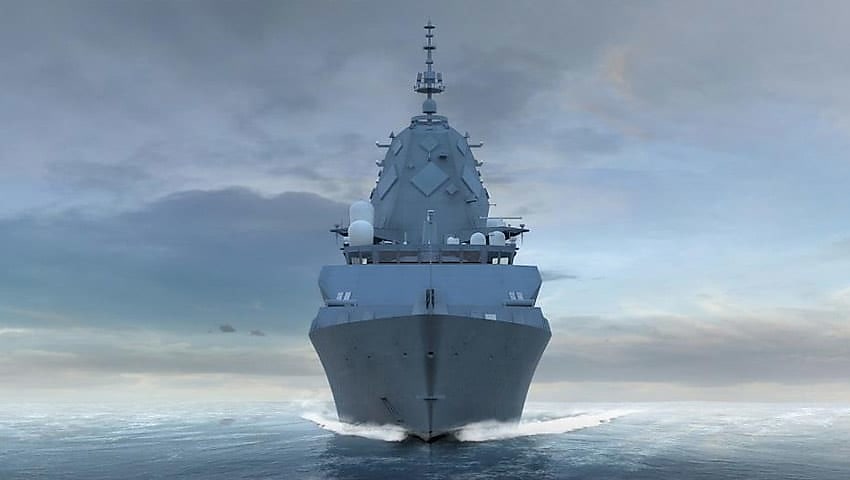Defence Minister Linda Reynolds and her British counterpart, UK Secretary of State for Defence Ben Wallace, have announced the signing of a memorandum of understanding (MoU) to co-operate on building and delivering the next generation of cutting-edge frigates.
The MoU reinforces both countries’ commitment to working together on delivering these important high-profile national programs and maximising mutual opportunities. A key aspect of the MOU is a pledge for information exchange to ensure shipbuilding best practice is shared and both frigate programs deliver world-beating maritime capabilities to the Royal Navy and Royal Australian Navy.
The agreement also sets out a framework to enable both nations to utilise the Type 26 and Hunter programs to create jobs and contribute to the growth of the UK and Australian economies, seeking to support small and medium-sized enterprises.
UK Defence Secretary Ben Wallace said the UK’s defence relationship with Australia was based on deep historical and cultural ties, reinforced by strong operational co-operation.
"The UK and Australia have always been natural allies and this agreement demonstrates this government’s ongoing commitment to the Type 26 shipbuilding program whilst supporting our Australian allies to design and build the Hunter class frigate. As we look to the future of our respective navies, our shared continued co-operation will benefit not only our close alliance but will also support the industrial supply chain to grow each nation’s shipbuilding sectors," Secretary Wallace said.
From working together in Afghanistan and Iraq, to the broader shared interest in safeguarding the rules‑based global order, UK and Australia continue to invest in their long-standing alliance.
In his role as Shipbuilding Tsar, the UK Defence Secretary is actively reinvigorating UK shipbuilding. This role brings together other government departments to shape policies and strategies. As Shipbuilding Tsar, he works closely with colleagues across government to bring together the brilliant work already being done, and to ensure British shipbuilding thrives.
Defence Minister Linda Reynolds welcomed the signing of the MoU, explaining there are currently seven Australian companies contracted for work on the UK’s Type 26 programs.
"This agreement supports the close co-operation between UK and Australian industry. We are already seeing the benefits of cooperation on the two programm, with Australian workers involved in the Type 26 build ready to come home and help build the Hunter class frigates in South Australia," Minister Reynolds said.
"This government is committed to delivering a continuous naval shipbuilding program and the Hunter and Type 26 programs provide significant opportunities to capitalise on our shared industrial capability with the UK. The MoU will support successful delivery of Australia’s Hunter Class Frigate Program, while also growing key defence capabilities in Australia."
Prototyping for the Hunter Class Frigate Program will begin by the end of 2020.
In June 2018, the Commonwealth government announced BAE Systems Australia as the successful tender for the $35 billion SEA 5000 Future Frigate program. The nine Hunter Class frigates will be based on the BAE Systems Type 26 Global Combat Ship currently under construction for the Royal Navy and will replace the eight Anzac Class frigates when they enter service beginning in the late 2020s.
The Hunter Class is billed as an anti-submarine warfare (ASW) centric vessel delivering an advanced ASW capability to the Royal Australian Navy at a time when 50 percent of the world’s submarines will be operating in the Indo-Pacific region.
BAE Systems Australia announced that it had selected Lockheed Martin Australia and Saab Australia as combat systems integration industry partners, responsible for delivering the Australian designed CEAFAR 2 Active Phased Array Radar, Lockheed Martin designed Aegis combat management system and Saab Australia 9LV tactical interface.
The $35 billion program sees ASC Shipbuilding become a subsidiary of BAE Systems throughout the build process beginning in 2020 at the Osborne Shipyard in South Australia, creating more than 4,000 jobs.
BAE Systems expects the Australian industry content (AIC) for the Hunter Class build will be 65-70 per cent, which will create and secure thousands of jobs for decades. At the end of the program the Commonwealth will resume complete ownership of ASC Shipbuilding, thereby ensuring the retention in Australia of intellectual property, a highly skilled workforce and the associated equipment.
SEA 5000 is expected to support over 500 Australian businesses who have been pre-qualified to be part of the Hunter class supply chain, with the Australian steel industry in particular, benefiting from the 48,000 tonnes of steel required to build the ships.






